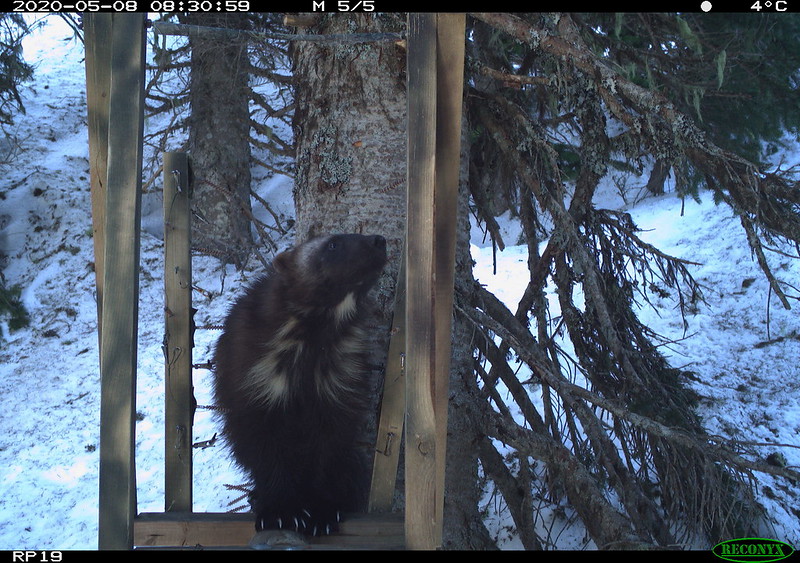
The wolverine is the largest terrestrial member of the weasel family in North America. They are very rare but wide-ranging carnivores, traveling across mountains and forests in search of food.
Conservation status: Threatened
Few have ever set eyes on a wolverine (Gulo gulo) in the wild. A secretive wanderer of mountain ridges and forests, wolverines are perhaps the greatest symbol of the wilderness of the Rocky Mountains. Although they weigh less than most household dogs, this carnivore has a reputation for ferocity—researchers have recorded them hunting moose.
Wolverines are extremely rare. Some biologists believe there are only 300 in the contiguous US in total. This is, in part, because of their unique role in the ecosystem. Wolverines have big, flat feet to walk on top of deep snowpack, thick fur coats, and keen noses. Their reliance on snowpack for hunting and denning makes them extremely sensitive to climate change.
In late 2023, after decades of pressure from activists, the US Fish and Wildlife Service listed the population of wolverines in the contiguous US as threatened under the Endangered Species Act.
Physical Characteristics: 12 – 18 inches tall at shoulder, 24 – 48 inches long, and 15 – 35 lbs. Large, muscular, agile weasel with small head, bushy tail, short legs, and large paws with cinnamon-brown – nearly black fur. Pale tan stripe runs down each side from shoulder to tail. Possesses one of most powerful jaws of any mammal on planet. Has a reputation for ferocity that far out matches its size.
Diet: Incredibly powerful for size; have ability to take down deer, caribou, mountain goats, and occasionally moose, particularly if weakened in harsh winter or deep snow. Generally prey on mice, ground squirrels, birds, beavers, and other rodents. Adept scavengers particularly during winter months.
Habitat: Large territory encompassing great variety of habitats. During winter inhabit lower elevations/valleys in pursuit of prey. In summer occupy ridges/mountains (pursuit of prey), including sub-alpine/alpine landscapes. Regardless of season, require large/remote protected areas in order to survive, with little/no human disturbance.
Range: Very small populations in Canadian/Northern Rockies; roams coniferous forests of Montana, Wyoming and Idaho. Even smaller populations in Northern Cascades of Washington/Oregon, and Central Rockies of Colorado. Sightings in Wallowa Mountains of northeastern Oregon. Best available science indicates less than 300 in Lower 48; Clearwater Basin one of last great strongholds.
Reproduction: Breeds from April – September but embryos do not implant until early winter if mother has adequate fat stores. Litter of 1 – 5 kits born between late-February and mid-April. Born blind and deaf; kits nurse for 8 – 9 weeks before leaving den with mother to acquire hunting skills. Kits typically spends first winter with mother, before sexually maturing and dispersing following spring.
Threats: Trapping, road building, logging, and recreation (motorized and non-motorized) have negatively impacted past two centuries. Climate change is serious concern; species depends on snow pack for habitat, denning, scavenging, and raising young.
Miscellaneous: Known as “skunk bear” because produces smell that rivals skunk. Abundant stinky scent produced in anal glands and used to mark territory. Wolverines and skunks are part of Mustelidae family. Wolverines also referred as “Symbol of Wilderness”.
Friends of the Clearwater
PO Box 9241
Moscow, ID 83843
(208) 882-9755